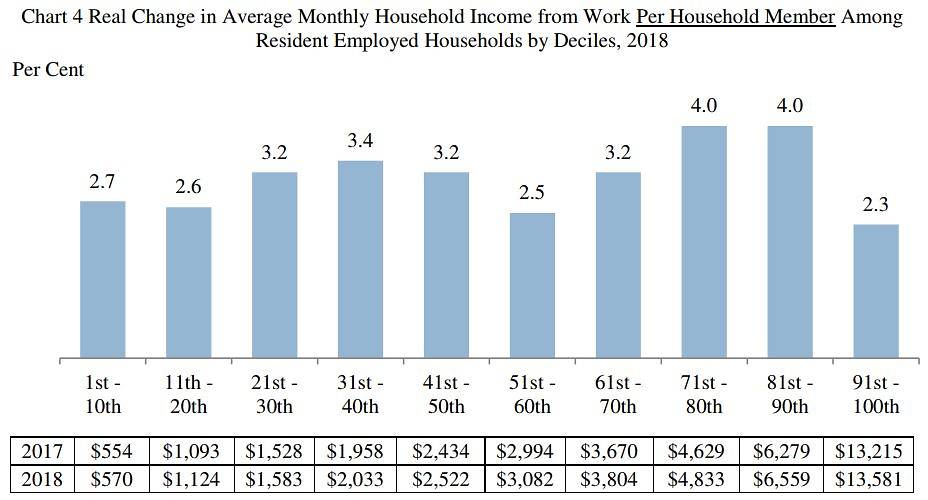Singapore
Those in the 71st to 90th percentile income groups enjoyed higher real wage growth.
File photo of HDB flats. (Photo: Hester Tan)
SINGAPORE: Households in Singapore saw their earnings from work increase in 2018, while income inequality in Singapore held near the lowest level in a decade, according to official data released on Wednesday (Feb 13).
Among households headed by a Singapore citizen or permanent resident which had at least one working person, the median monthly income last year grew by 3 per cent in nominal terms to S$9,293, up from $9,023 in 2017.
Factoring in inflation, the increase was 2.6 per cent in real terms, showed the Key Household Income Trends report by the Singapore Department of Statistics.
After accounting for household size, the median monthly household income from work per household member grew by 3.4 per cent in nominal terms, or 3 per cent in real terms, to S$2,792 in 2018.
The annual report noted that households across all income groups enjoyed real growth in average work earnings per member in 2018.

Change in average household income from work per household member. (Source: SingStat)
Households in the 1st to 70th percentile income groups saw real growth of 2.5 per cent to 3.4 per cent. Those in the 71st to 90th percentile income groups enjoyed higher real growth of 4 per cent, the report showed.
Households in the top 10 per cent recorded real growth of 2.3 per cent.
INCOME INEQUALITY STABLE
For 2018, Singapore’s Gini coefficient – which measures income inequality as a ratio from 0 to 1, with 0 representing total income equality – was 0.458.
This continues to be among the lowest levels in a decade, with the Gini coefficient standing at 0.459 in 2017 and 0.458 in 2016.
After including Government transfers and taxes, the Gini coefficient for 2018 dropped to 0.404.
Families saying in one-room and two-room HDB flats received S$10,347 per household member on average – more than double the transfers than those in other housing types.
Resident households, including those with no working person, received S$4,494 per household member on average from various Government schemes last year.




